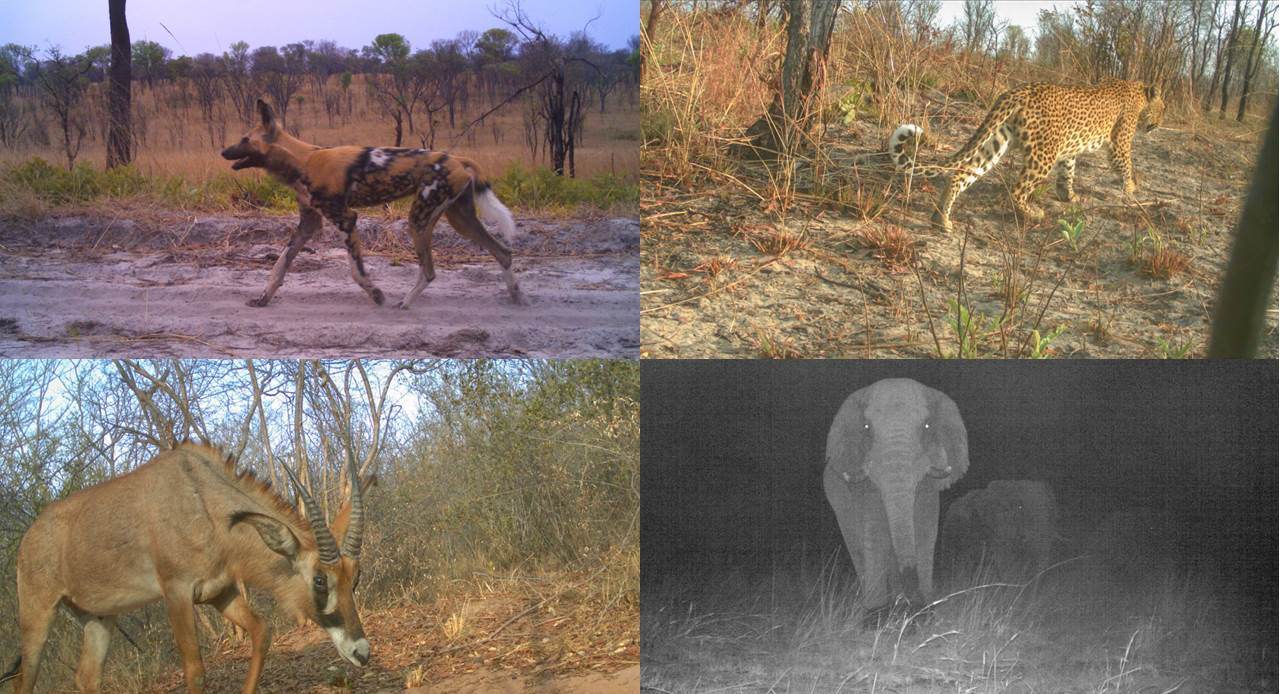REDISCOVERING ANGOLAN BIODIVERSITY: PATTERNS AND PROCESSES UNDERLYING LARGE MAMMAL COMMUNITY STRUCTURE ACROSS SOUTH ANGOLA

STUDENT SEMINAR IN BIODIVERSITY AND EVOLUTION

The civil unrest that affected Angola’s recent history deemed the management of its National Parks to be neglected for a period of c. 40 years. The war for independence and subsequent civil war had devastating consequences for wildlife, with widespread poaching and bush meat hunting, presumably leading to extirpation of many species, from their former range, particularly large herbivores and carnivores.
As a consequence, little is known about the current status of Angolan big mammal communities, namely about key parameters such as species’ distribution, population size or trends. However, preliminary studies in Bicuar National Park provided encouraging results, suggesting high levels of wildlife diversity.
These recent findings were the kick-start for the project where my PhD is inserted, which is set to achieve two complementary main goals. The first goal is to characterize the big mammal communities’ structure across the environmental gradient in south Angola, from the western low-productivity desert ecosystems of Namibe eastwards to the miombo and moist woodlands of the Cuando-Cubango region. After characterizing these communities, I will address the second goal of my PhD, which sets out to understand the role of top-down and bottom-up forces in the regulation of large herbivores’ behavior and habitat use, and if the relative strength of each of these forces varies with (i) the size of the predators and prey species and/or (ii) the seasonal variation in primary productivity and food availability.
My research goals will be tackled using data collected by camera-trapping. A total of nine study sites will be sampled across three protected areas in south Angola (three sites/protected area). Each study site will be monitored with 50 camera stations, deployed under a grid-like sampling protocol. The detection records of my target species will provide data on species occurrence and behavior that will be used to parametrize spatially explicit models to assess species occupancy, population size and using foraging/vigilant behavior models for unmarked animals, using vegetation cover, primary productivity and predation risk as potentially explanatory covariates for the observed patterns.
Filipe Rocha holds a Master in Ecology from University of Coimbra. He is presently in the third year of the PhD in Biodiversity, Genetics and Evolution (BIODIV) from University of Porto. He is developing a PhD project on predator-prey relationships and how herbivores respond to the predation pressure in south Angola National Parks, under the supervision of Professor Nuno Ferrand, Dr. Pedro Monterroso, and Professor Fernanda Lages (ISCED-Huíla, Angola). Filipe’s scientific main interests are large mammals’ population dynamics and community ecology.
[Host: Pedro Monterroso, Population Genetics, Hybridization and Speciation]
Image credits: Filipe Rocha